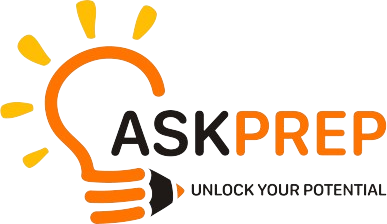Introduction
We live in a world where information travels at lightning speed. From trending hashtags to viral reels, social media has redefined how people across the globe connect, consume, and create content. What started as a tool to stay in touch with friends has now evolved into a powerful force shaping public opinion, business strategies, political campaigns, and cultural movements.
While social media offers countless benefits — such as global connectivity and opportunities for expression — it also brings serious challenges. These include mental health concerns, cyberbullying, misinformation, and digital addiction. At the same time, social media opens doors for entrepreneurship, digital education, and activism. Understanding this complex landscape is crucial in today’s digital age.
Influence of Social Media
Social media platforms influence almost every aspect of our lives. Their reach and impact are unmatched in modern history.
1. Cultural Influence
Social media spreads culture faster than any traditional medium. It introduces users to new trends, global lifestyles, art, music, and language. Memes, viral challenges, and influencers create a global youth culture that transcends national boundaries.
2. Political Impact
Politicians and political movements now use platforms like Twitter and Facebook to campaign, share views, and mobilize supporters. Social media played a key role in events like the Arab Spring, Black Lives Matter, and India’s 2014 and 2019 general elections.
3. Consumer Behavior and Advertising
Businesses rely on social media to connect with consumers. Through targeted ads, influencer marketing, and customer engagement, platforms like Instagram and YouTube have reshaped how brands promote and sell their products.
4. Education and Awareness
Social media is also used as a tool for spreading awareness about health, environment, rights, and more. During the COVID-19 pandemic, for example, it helped spread critical information quickly and efficiently.
Challenges of Social Media
Despite its many positives, social media comes with significant drawbacks that users and society must address.
1. Mental Health Issues
Constant exposure to idealized images and curated lifestyles can lead to feelings of inadequacy, anxiety, and depression — especially among teenagers and young adults. Fear of missing out (FOMO), cyberbullying, and online validation can damage self-esteem.
2. Spread of Misinformation
Fake news, manipulated videos, and misleading content can spread quickly, causing public confusion, panic, and even violence. Algorithms often prioritize engagement over accuracy, allowing misinformation to thrive.
3. Cybercrime and Data Privacy
With more personal data online, the risk of identity theft, phishing attacks, and privacy violations increases. Many users do not fully understand how their data is used or sold by tech companies.
4. Social Polarization
Social media can create echo chambers — where users are exposed only to views that match their own. This deepens political and social divides, making open dialogue more difficult.
5. Screen Addiction
Endless scrolling, notifications, and content loops can make users spend unhealthy amounts of time online. This leads to reduced productivity, sleep disruption, and even social withdrawal.
Opportunities Through Social Media
Despite these challenges, social media presents vast opportunities for individuals, businesses, and society as a whole.
1. Empowerment and Expression
Anyone with a phone can share their voice with the world. Activists, artists, writers, and citizens can express themselves and be heard without needing traditional platforms.
2. Digital Entrepreneurship
Platforms like Instagram, YouTube, and LinkedIn have enabled individuals to start businesses, offer services, and earn money online. Influencers, content creators, and freelancers thrive in this digital ecosystem.
3. Social Activism and Awareness
Social media has become a powerful tool for raising awareness about important issues like climate change, gender equality, mental health, and human rights. Movements that once took years to build now gain momentum in days.
4. Learning and Collaboration
From online courses to free tutorials, social media facilitates learning at every level. Communities around coding, art, language, fitness, and more allow people to collaborate and grow.
5. Crisis Response and Crowdsourcing
During natural disasters or public emergencies, social media helps connect people with help, share updates, and organize relief efforts. It has been instrumental in finding missing persons, funding medical treatments, and spreading emergency alerts.
Conclusion
The impact of social media is vast, complex, and continually evolving. It is both a mirror of society and a powerful tool that shapes our present and future. On one hand, it connects us, empowers voices, and fosters creativity. On the other, it brings risks that challenge our mental health, privacy, and sense of reality.
As users, we must learn to navigate this double-edged sword responsibly. Digital literacy, awareness, and ethical use are essential in making social media a positive force. Governments and companies must enforce better regulation, protect user data, and fight misinformation.
Social media is not going away — it will only grow more influential. The question is how we choose to use it. Will we be consumed by it, or will we harness its power to learn, grow, connect, and create?
The future of social media depends on all of us — as individuals, educators, creators, and citizens. If we understand both its promises and its pitfalls, we can turn it into a tool for progress rather than distraction.

